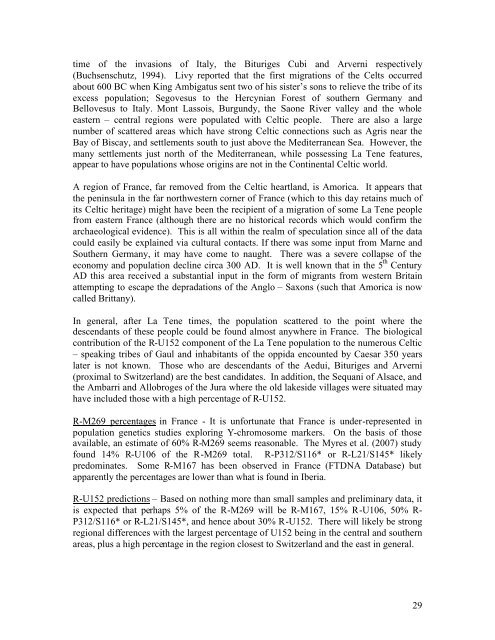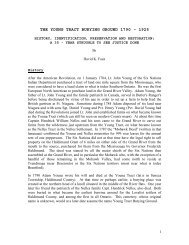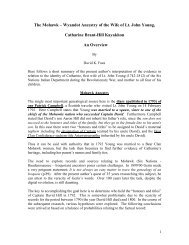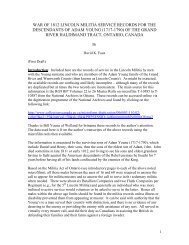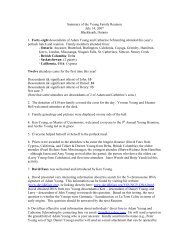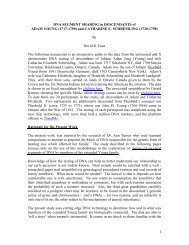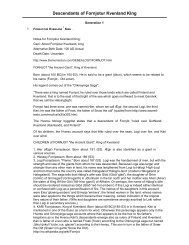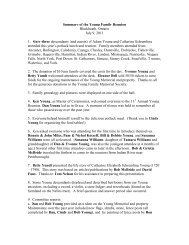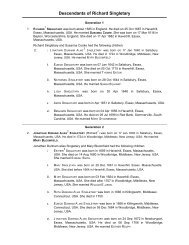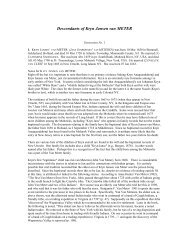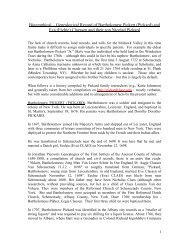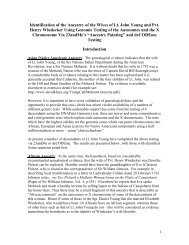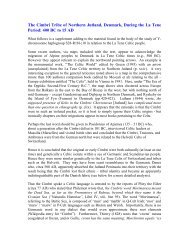Part 2 - Davidkfaux.org
Part 2 - Davidkfaux.org
Part 2 - Davidkfaux.org
You also want an ePaper? Increase the reach of your titles
YUMPU automatically turns print PDFs into web optimized ePapers that Google loves.
time of the invasions of Italy, the Bituriges Cubi and Arverni respectively(Buchsenschutz, 1994). Livy reported that the first migrations of the Celts occurredabout 600 BC when King Ambigatus sent two of his sister’s sons to relieve the tribe of itsexcess population; Segovesus to the Hercynian Forest of southern Germany andBellovesus to Italy. Mont Lassois, Burgundy, the Saone River valley and the wholeeastern – central regions were populated with Celtic people. There are also a largenumber of scattered areas which have strong Celtic connections such as Agris near theBay of Biscay, and settlements south to just above the Mediterranean Sea. However, themany settlements just north of the Mediterranean, while possessing La Tene features,appear to have populations whose origins are not in the Continental Celtic world.A region of France, far removed from the Celtic heartland, is Amorica. It appears thatthe peninsula in the far northwestern corner of France (which to this day retains much ofits Celtic heritage) might have been the recipient of a migration of some La Tene peoplefrom eastern France (although there are no historical records which would confirm thearchaeological evidence). This is all within the realm of speculation since all of the datacould easily be explained via cultural contacts. If there was some input from Marne andSouthern Germany, it may have come to naught. There was a severe collapse of theeconomy and population decline circa 300 AD. It is well known that in the 5 th CenturyAD this area received a substantial input in the form of migrants from western Britainattempting to escape the depradations of the Anglo – Saxons (such that Amorica is nowcalled Brittany).In general, after La Tene times, the population scattered to the point where thedescendants of these people could be found almost anywhere in France. The biologicalcontribution of the R-U152 component of the La Tene population to the numerous Celtic– speaking tribes of Gaul and inhabitants of the oppida encounted by Caesar 350 yearslater is not known. Those who are descendants of the Aedui, Bituriges and Arverni(proximal to Switzerland) are the best candidates. In addition, the Sequani of Alsace, andthe Ambarri and Allobroges of the Jura where the old lakeside villages were situated mayhave included those with a high percentage of R-U152.R-M269 percentages in France - It is unfortunate that France is under-represented inpopulation genetics studies exploring Y-chromosome markers. On the basis of thoseavailable, an estimate of 60% R-M269 seems reasonable. The Myres et al. (2007) studyfound 14% R-U106 of the R-M269 total. R-P312/S116* or R-L21/S145* likelypredominates. Some R-M167 has been observed in France (FTDNA Database) butapparently the percentages are lower than what is found in Iberia.R-U152 predictions – Based on nothing more than small samples and preliminary data, itis expected that perhaps 5% of the R-M269 will be R-M167, 15% R-U106, 50% R-P312/S116* or R-L21/S145*, and hence about 30% R-U152. There will likely be strongregional differences with the largest percentage of U152 being in the central and southernareas, plus a high percentage in the region closest to Switzerland and the east in general.29


